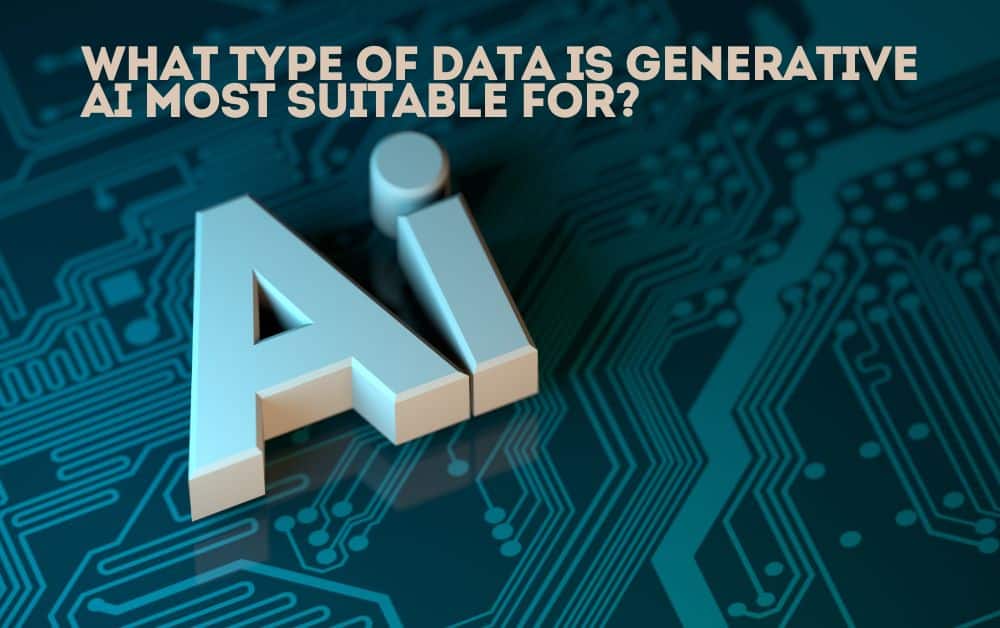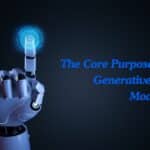Have you ever wondered how computers can create pictures, write stories, or even make music? That’s where generative AI comes in! But what type of data is this amazing technology best at working with?
In simple terms, generative AI is really good at understanding and creating new content from things like images, text, and sounds.
Generative AI can work with different types of data, including images, text, video, audio, and more. Each type of data has its own unique way that AI can use to create something new.
In this blog, we’ll explore the types of data generative AI is best suited for and how it can transform them into something amazing!
Table of Contents
Image Data

What is Image Data?
Image data refers to pictures or visual content that we see every day. This could be anything from photos on your phone, digital art, or even diagrams and chars.
How Does Generative AI Work with Image Data?
Generative AI can create brand-new images by learning from a large collection of existing pictures. For example, it can be trained on thousands of photos of animals and then create a new, unique animal image that doesn’t exist in real life! This is possible because generative AI understands patterns, shapes, and colors from the data it’s trained on.
Examples of Generative AI with Image Data
Art Creation:
Artists can use generative AI to create new artwork, combining styles from famous painters to produce something original.
Game Design:
Video game designers use generative AI to create new characters, landscapes, and items that fit perfectly within the game’s world.
Medical Imaging:
In healthcare, generative AI helps doctors by creating detailed images of organs or tissues, assisting in diagnosis.
Text Data

What is Text Data?
Text data is any written content like books, articles, social media posts, and even the messages you send to your friends.
How Does Generative AI Work with Text Data?
Generative AI is great at working with text data because it can learn from millions of sentences to understand language patterns. After learning, it can write new sentences, paragraphs, or even entire books! It mimics the way people write, so the text it creates can be very natural and readable.
Examples of Generative AI with Text Data
Story Writing:
Generative AI can help authors by generating story ideas or even writing full chapters based on a brief outline.
Chatbots:
Many companies use generative AI to create chatbots like (Chatgpt) that can respond to customer questions as if they were real people.
Language Translation:
Generative AI can translate text from one language to another, making communication across languages easier.
Video Data

What is Video Data?
Video data includes moving pictures with sound, like the videos you watch on YouTube, movies, and TV shows.
How Does Generative AI Work with Video Data?
Generative AI can analyze and learn from existing videos to create new video content. This includes generating realistic animations, creating special effects, or even making new scenes for a movie.
Examples of Generative AI with Video Data
Film Production:
Filmmakers use generative AI to create visual effects and animations that would be difficult or expensive to produce manually.
Video Editing:
Generative AI helps editors by automatically generating new scenes or enhancing video quality.
Personalized Videos:
Companies use generative AI to create personalized video messages for customers, based on their interests and preferences.
Audio Data

What is Audio Data?
Audio data refers to sound recordings, such as music, podcasts, voice recordings, and sound effects.
How Does Generative AI Work with Audio Data?
Generative AI can create new sounds, music, and even replicate human voices by learning from existing audio data. It can compose new songs, generate sound effects for games, or create natural-sounding speech.
Examples of Generative AI with Audio Data
Music Composition:
Musicians use generative AI to create new music by blending different genres and styles.
Voice Assistants:
AI like Siri or Alexa uses generative AI to understand and respond to voice commands naturally.
Audio Restoration:
Generative AI can enhance or restore old audio recordings, making them sound clearer and more modern.
Structured Data
What is Structured Data?
Structured data is highly organized information, often found in databases, spreadsheets, or any data table that follows a clear format.
How Does Generative AI Work with Structured Data?
Generative AI can analyze patterns in structured data and use this to generate new datasets or make predictions. For example, it can generate new entries for a database or predict future trends based on past data.
Examples of Generative AI with Structured Data
Data Augmentation:
Generative AI can create new data samples that help improve the accuracy of machine learning models.
Financial Forecasting:
Businesses use generative AI to predict future sales, stock prices, or other important metrics.
Product Recommendations:
Online stores use generative AI to suggest products you might like, based on structured data from your previous purchases.
Unstructured Data
What is Unstructured Data?
Unstructured data is any information that doesn’t follow a specific format. This includes things like emails, social media posts, or videos, where the content isn’t organized in a fixed way.
How Does Generative AI Work with Unstructured Data?
Generative AI is excellent at making sense of unstructured data. It can analyze large amounts of this data to generate insights, create summaries, or even produce new content based on patterns it finds.
Examples of Generative AI with Unstructured Data
Content Creation:
AI can analyze existing content from the web and generate new articles or summaries on similar topics.
Sentiment Analysis:
Generative AI can analyze social media posts to understand public opinion and generate reports on trends.
Custom Emails:
Businesses use generative AI to write personalized email content, making marketing efforts more effective.
Conclusion
Generative AI is incredibly versatile, capable of working with a wide range of data types. Whether it’s creating stunning visuals, writing compelling stories, producing unique music, or making sense of complex data, generative AI can enhance creativity and efficiency across many fields.
As technology continues to evolve, we can expect even more innovative uses of generative AI in the future, making it an essential tool for anyone looking to unlock new possibilities in their work or hobbies.



